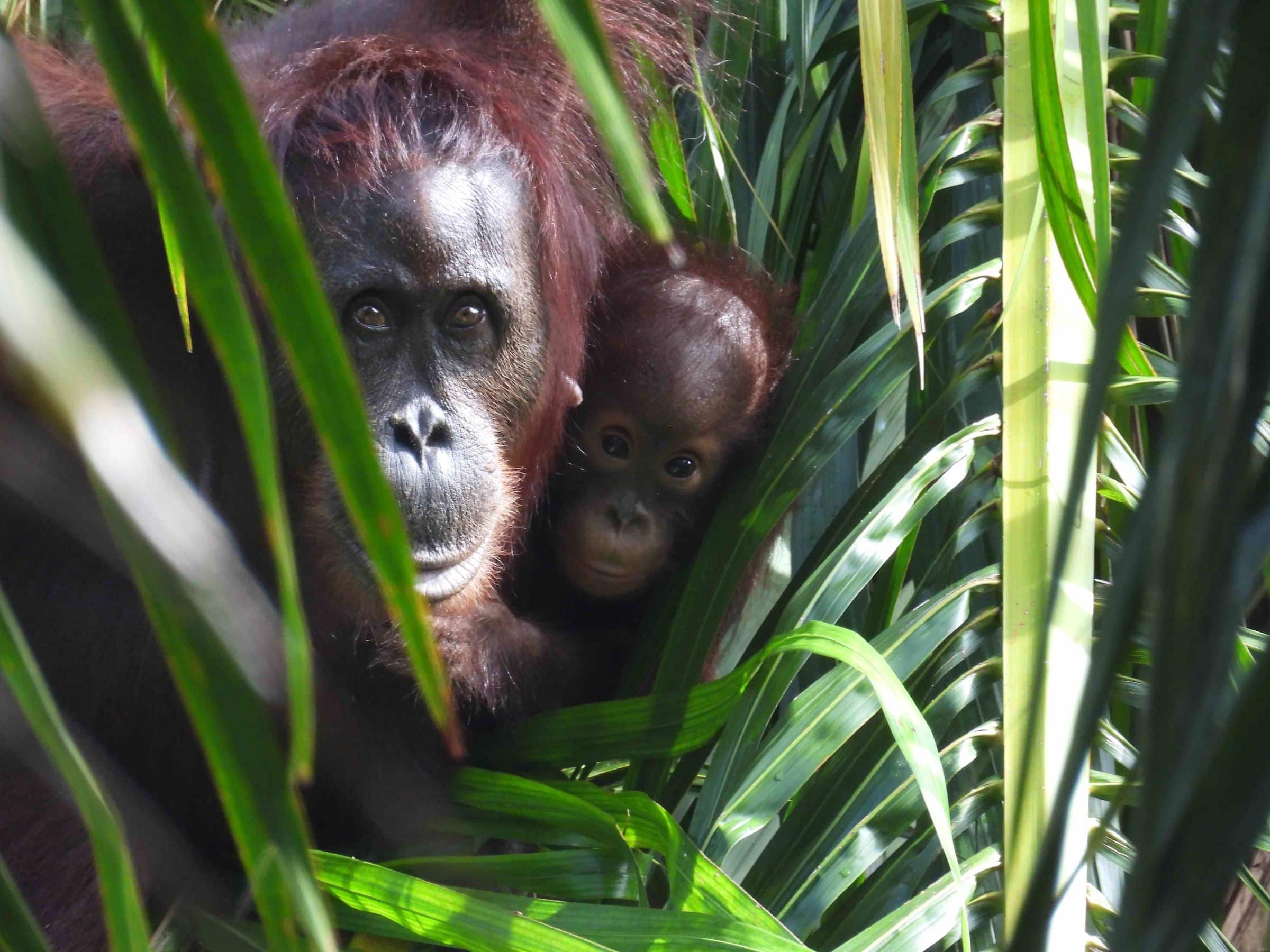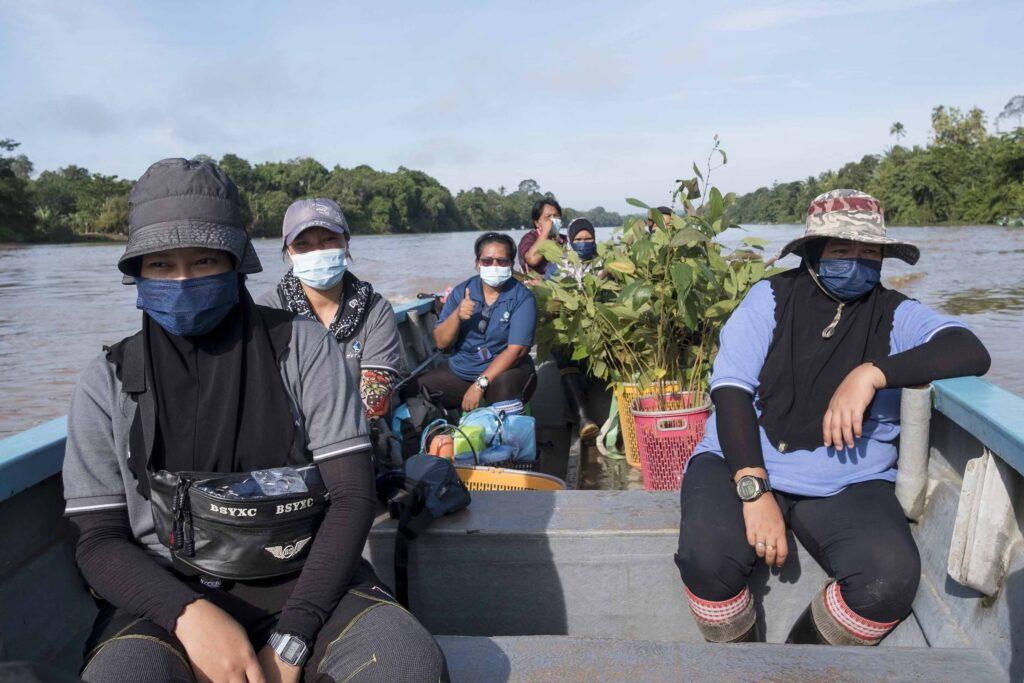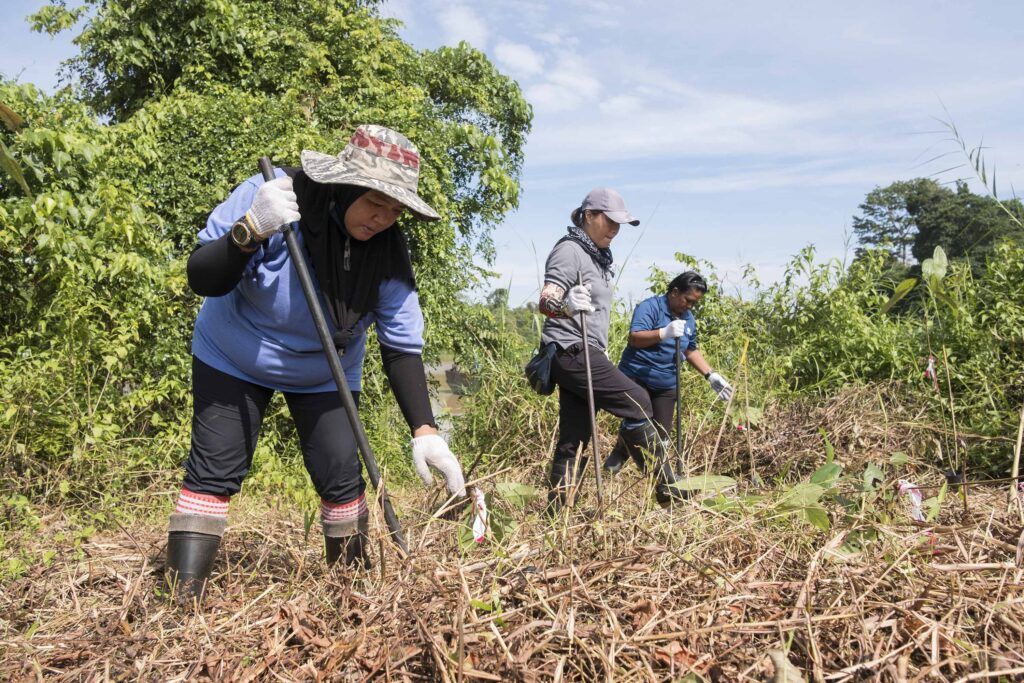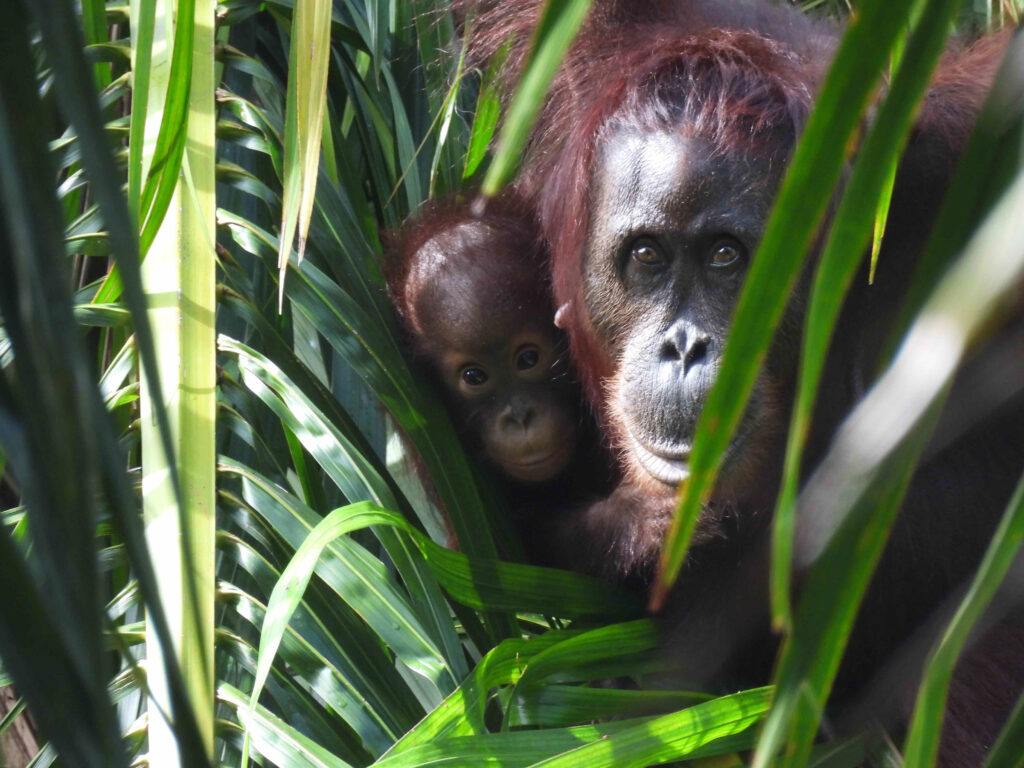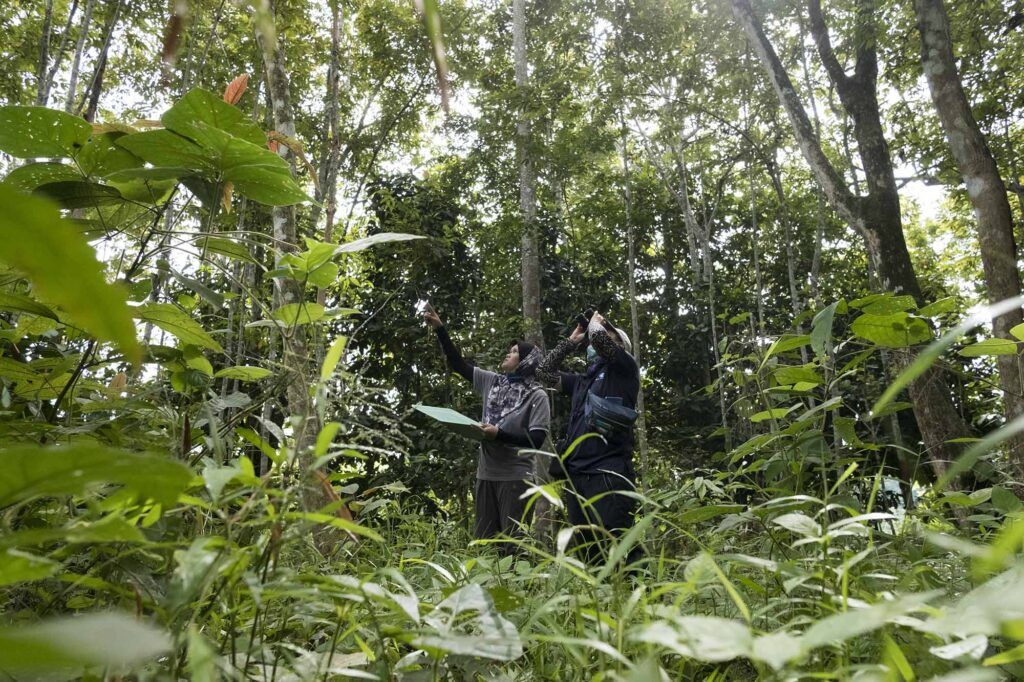As hints of sunlight bloomed over the horizon, Norinah Braim and Mariana Singgong assembled their teams and climbed into the boats. With buckets of tree saplings strapped to their backs, they began their journey from Sukau Village up the Kinabatangan River to the planting site, where the calls of monkeys heralded their arrival. As the team leaders of Hutan’s reforestation program, these women were pleased to see wildlife reappearing in these once barren lands. Most importantly, there was evidence that orangutans, the world’s largest tree-dwelling mammals, were traversing these forests as well.
The forests around Malaysian Borneo’s Kinabatangan River are some of the most biodiverse areas on Earth. Since the 1950s, these forests have been reduced to make way for highly lucrative palm oil plantations, causing major habitat loss for orangutans and other wildlife. For over a decade, Hutan’s reforestation teams have planted new trees to reconnect fragmented habitat and rebuild forests once devastated by industry. They are collaborating with palm oil companies to plant trees in designated parts of the plantations to create wildlife corridors, reconnecting orangutan populations and allowing them to safely travel through agricultural landscapes. But reforesting the land is no quick process.
It takes four years for the trees to bear fruit, and six years to grow tall enough for orangutans to nest in them. Every day, Norinah and Mariana lead their teams to these planting sites, where they work tirelessly from dawn to dusk conducting surveys, clearing grasses and bushes, and planting tree seedlings. It takes at least three years of regular maintenance to ensure these trees grow successfully. Without daily care, newly planted trees will likely die in this dense environment. Rebuilding forests is a source of pride and opportunity for the 25 team members from Sukau Village, nearly all of whom are former housewives who are now earning vital income for their families.
The immense dedication of these women has led to substantial results, with more than 200,000 trees planted and over 60 acres—the equivalent of five football fields—restored since the program began. This year, Hutan has sighted at least ten orangutans using their corridors for food, shelter, and travel, and also see clouded leopards, elephants, hornbills, and proboscis monkeys frequenting their planting sites. Small birds and mammals also fill these new forests, bringing with them new seeds that are distributed throughout Hutan’s plots. The teams have already recorded 50 new tree species growing in their corridors that they didn’t plant themselves, showing how nature rebuilds itself once the scars of deforestation have healed.
As the day drew to a close, Norinah and Mariana led their teams back to the boats, planning to return again tomorrow with fresh saplings in tow. They smiled, taking stock of how their labors are paving the way for orangutans and other wildlife to reclaim their habitats. With many landscapes in Malaysian Borneo still in need of restoration, the women of Hutan’s reforestation program are eager to continue their daily work.
